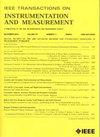Hierarchical Fault Diagnosis Method for Piezoresistive Pressure Sensor Based on GAF and CNN-SVM
IF 5.6
2区 工程技术
Q1 ENGINEERING, ELECTRICAL & ELECTRONIC
IEEE Transactions on Instrumentation and Measurement
Pub Date : 2025-06-23
DOI:10.1109/TIM.2025.3582310
引用次数: 0
Abstract
The requirements for reliability of piezoresistive pressure sensor in modern society are getting higher and higher because of wide application range of sensor and complex working environments. However, due to material properties and working principle (Wheatstone bridge), the failure caused by the degradation of different internal components in piezoresistive pressure sensors exhibits high degree of approximation, mainly reflected in the change in sensor output sensitivity coefficient and signal nonlinear distortion. This brings some challenges to the fault diagnosis of piezoresistive pressure sensor, including how to effectively extract features that can characterize different faults, how to accurately identify faults, and how to judge the severity of corresponding faults. To solve the above crucial problems, a hierarchical fault diagnosis (HFD) method based on Gramian angular fields (GAFs) and convolutional neural networks constructed with support vector machine (CNN-SVM) is presented in this article. First, the piezoresistive pressure sensor fault types are defined according to the functional area. Second, GAF is adopted to encode original output signal of the sensor, which can solve the problem of weak fault features in the original signal. Third, CNN is used to extract the features of Gramian angular summation field (GASF) images transformed by GAF. Moreover, SVM is used as the classifier connected to the flattening layer of CNN. Final, an HFD architecture is proposed to realize fault identification and fault severity judgment. The experimental results indicate the method in this article can effectively extract features, accurately identify different faults of the pressure sensor, and judge the severity of the fault. The accuracy of fault identification achieves 99.34% and the highest accuracy of severity judgment achieves 98%. It proves that the method proposed in this article is applicable and efficient for industrial application.基于GAF和CNN-SVM的压阻式压力传感器分层故障诊断方法
由于传感器的应用范围广,工作环境复杂,现代社会对压阻式压力传感器的可靠性要求越来越高。然而,由于材料特性和工作原理(惠斯通电桥)的原因,压阻式压力传感器中不同内部元件退化引起的失效具有高度的近似性,主要体现在传感器输出灵敏度系数的变化和信号非线性畸变上。这给压阻式压力传感器的故障诊断带来了一些挑战,包括如何有效地提取能够表征不同故障的特征,如何准确地识别故障,以及如何判断相应故障的严重程度。为了解决上述关键问题,本文提出了一种基于Gramian角场(gaf)和基于支持向量机(CNN-SVM)构建的卷积神经网络的分层故障诊断方法。首先,根据功能区域定义压阻式压力传感器的故障类型。其次,采用GAF对传感器原始输出信号进行编码,解决了原始信号中故障特征较弱的问题。第三,利用CNN提取经GAF变换后的Gramian角和场(GASF)图像的特征。并且使用SVM作为与CNN平面化层相连的分类器。最后,提出了一种HFD体系结构来实现故障识别和故障严重程度判断。实验结果表明,本文方法可以有效地提取特征,准确识别压力传感器的不同故障,并判断故障的严重程度。故障识别正确率达到99.34%,严重程度判断最高正确率达到98%。实践证明,本文提出的方法在工业应用中是可行的、高效的。
本文章由计算机程序翻译,如有差异,请以英文原文为准。
求助全文
约1分钟内获得全文
求助全文
来源期刊

IEEE Transactions on Instrumentation and Measurement
工程技术-工程:电子与电气
CiteScore
9.00
自引率
23.20%
发文量
1294
审稿时长
3.9 months
期刊介绍:
Papers are sought that address innovative solutions to the development and use of electrical and electronic instruments and equipment to measure, monitor and/or record physical phenomena for the purpose of advancing measurement science, methods, functionality and applications. The scope of these papers may encompass: (1) theory, methodology, and practice of measurement; (2) design, development and evaluation of instrumentation and measurement systems and components used in generating, acquiring, conditioning and processing signals; (3) analysis, representation, display, and preservation of the information obtained from a set of measurements; and (4) scientific and technical support to establishment and maintenance of technical standards in the field of Instrumentation and Measurement.
 求助内容:
求助内容: 应助结果提醒方式:
应助结果提醒方式:


